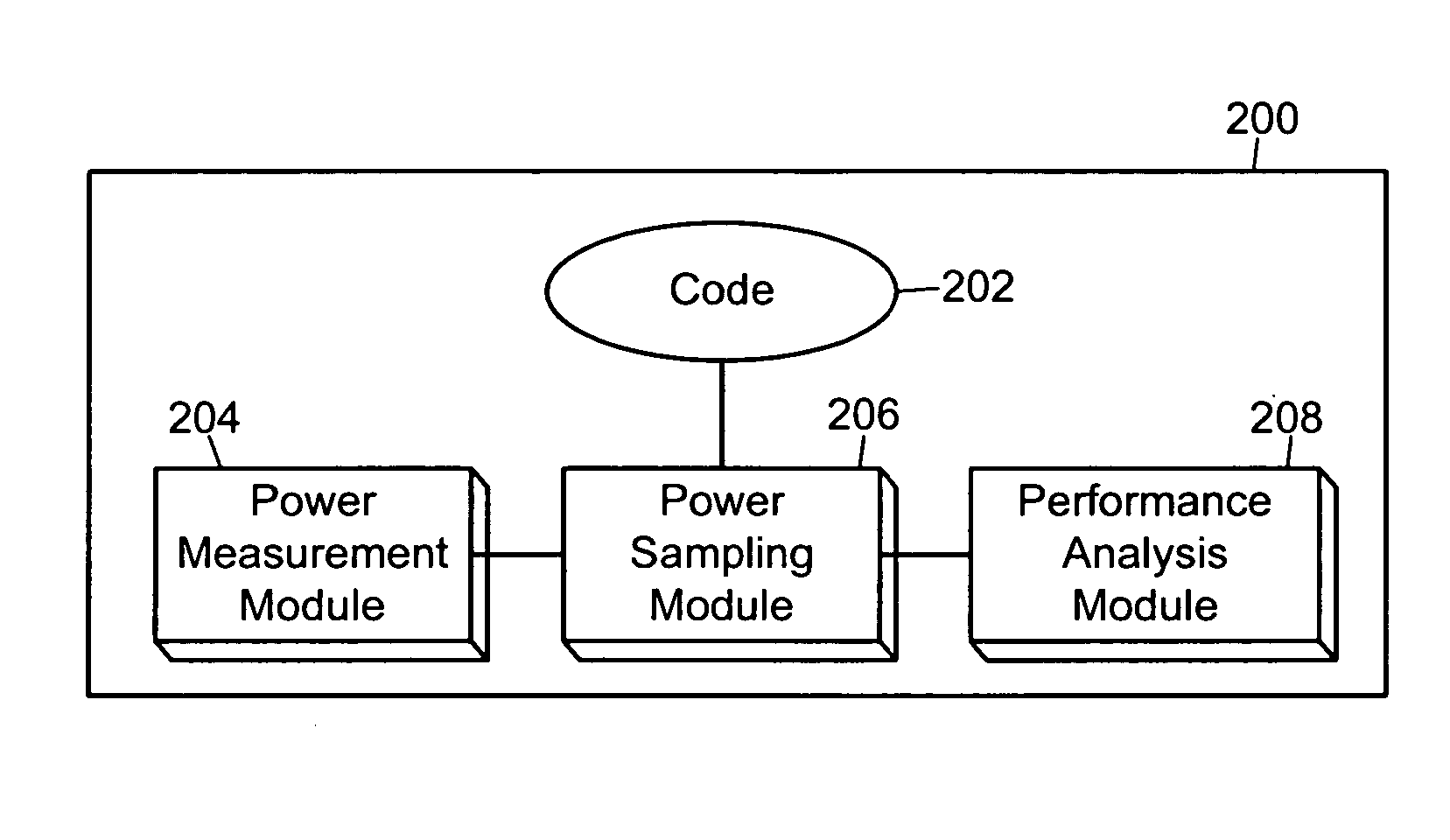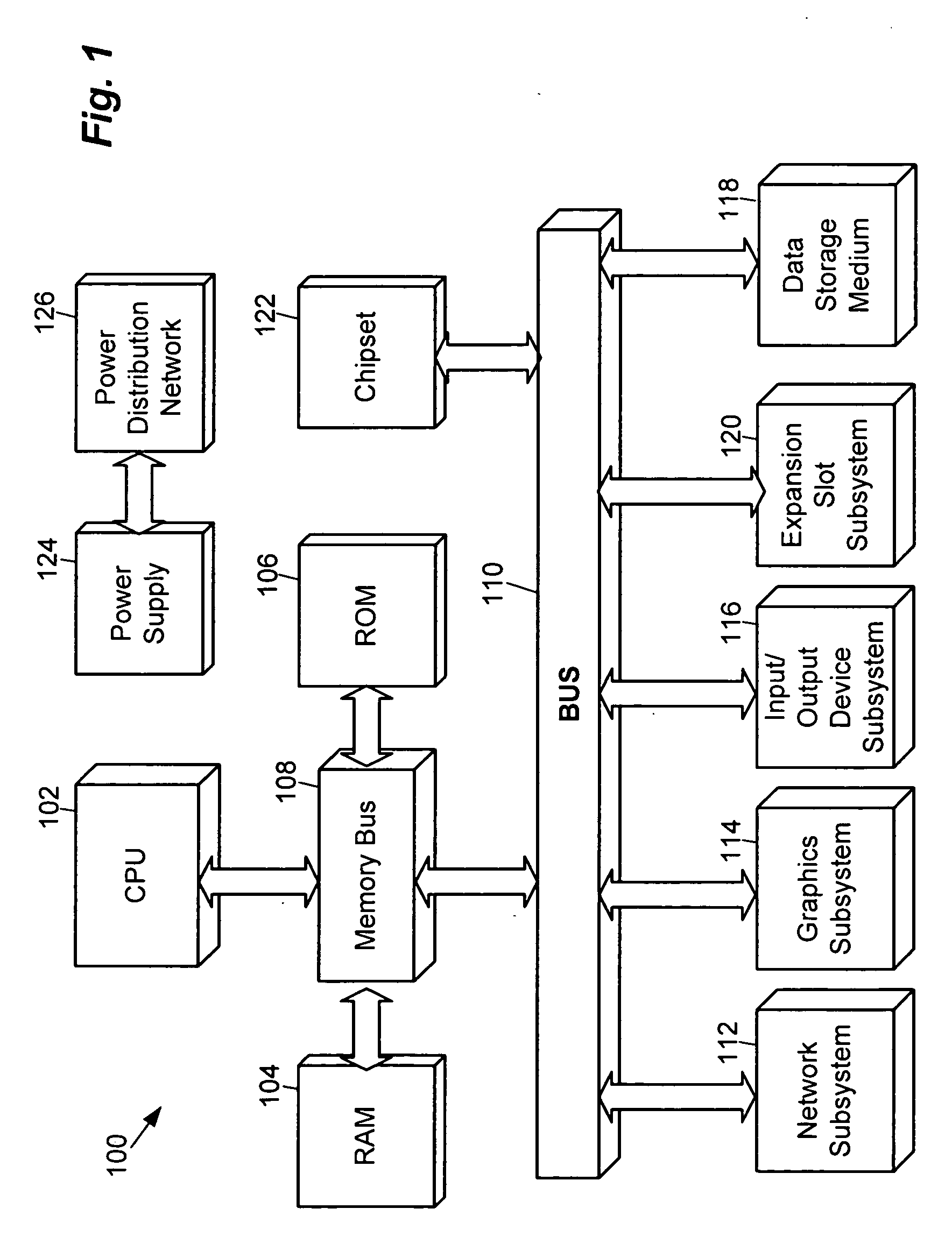Method and apparatus for profiling power performance of software applications
a software application and power performance technology, applied in the field of power management in processor-based systems, can solve the problems of inability to accurately profile the power consumption of software lack of efficient and accurate mechanism for measuring and profiling power consumption of applications running on battery-powered devices, and inability to monitor a complex software application in its entirety. power measurement into the existing performance analysis framework will not yield an accurate profile of applications' power consumption
- Summary
- Abstract
- Description
- Claims
- Application Information
AI Technical Summary
Problems solved by technology
Method used
Image
Examples
example 1
[0032]FIG. 4 illustrates an example implementation of architecture 400, similar to the architecture 200. A DC power source 402, such as a battery in a mobile or embedded device, supplies power to a subsystem 404 of the architecture 400. The subsystem 404 represents any machine subsystem, but in this example, it could also represent any component of a system or functional unit of the CPU. To measure the amount of power transmitted, a PMM 406 is coupled between the power source 402 and the subsystem 404. Alternatively, the PMM 406 may be coupled either to the power source 402 or to the subsystem 404. The PMM 406 is also coupled to a PSM 408 via a power monitoring interface 410, which may communicate with the PMM 406 to receive an indication that a desired quantum of power delivery from the power source 402 to the subsystem 404 has occurred. The PSM 408 further includes a system profiler 412 coupled to a CPU 414 for taking a snapshot of the CPU 414 upon a signal from the PMM 406. Alter...
PUM
 Login to View More
Login to View More Abstract
Description
Claims
Application Information
 Login to View More
Login to View More - Generate Ideas
- Intellectual Property
- Life Sciences
- Materials
- Tech Scout
- Unparalleled Data Quality
- Higher Quality Content
- 60% Fewer Hallucinations
Browse by: Latest US Patents, China's latest patents, Technical Efficacy Thesaurus, Application Domain, Technology Topic, Popular Technical Reports.
© 2025 PatSnap. All rights reserved.Legal|Privacy policy|Modern Slavery Act Transparency Statement|Sitemap|About US| Contact US: help@patsnap.com



